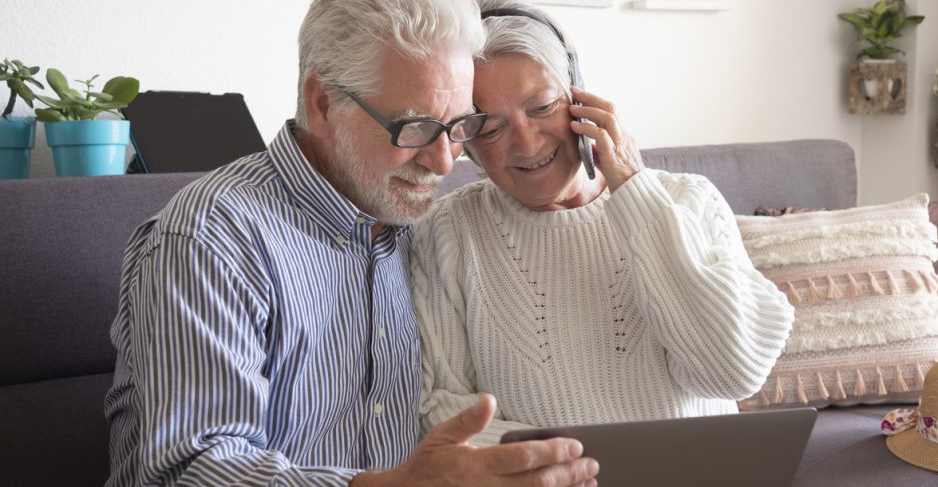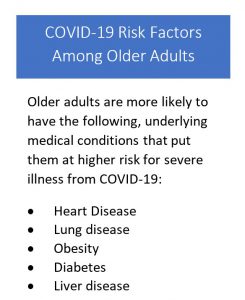Older Americans Month: How You Can Help Protect Their Health
Posted on by
May is Older Americans Month.
When President John F. Kennedy designated May as “Senior Citizens Month” in 1963, approximately 17 million Americans were age 65 or older.(1) Today, that number is 45 million.(2) It’s a demographic comparable in size to the population of Argentina.(3)
Who Are Older Adults?
Older adults are our parents, grandparents, aunts, uncles, friends, and neighbors. They are also essential and valued members of our communities and members of an at-risk population whose unique needs can mean the difference between life and death in an emergency. This is the case with the COVID-19 pandemic.
Older Adults and COVID-19
A weakened immune response can make it harder for older adults to fight off infections.(1) Older adults are also more likely to have serious underlying medical conditions that can make illness from COVID-19 more severe.
There are some simple and straightforward steps that older adults can take to reduce the risk of getting sick from COVID-19. These steps include staying home, having essential items delivered, limiting travel to essential errands, washing hands often, and keeping surfaces clean and disinfected.
How the community can protect older adults
People who are regularly involved in each other’s lives can be better prepared and able to help them during stressful times. Think about the older adults in your life and what you and your community can do to prepare and protect them.
- Wear a cloth face covering and keep at least 6 feet of physical distance from others when you leave home.

- Call, email, text, or video chat with older loved ones and neighbors often. They may be feeling lonely, anxious, or stressed and will appreciate your listening to them. Fear and anxiety about a disease can be overwhelming and cause strong emotions in adults and children.
- Check on older family, friends, and neighbors to make sure they have enough supplies. Offer to go grocery shopping for them. If you see them in person, keep a distance of at least 6 feet.
- Help to pick up (e.g., curbside or at a drive-thru) prescriptions or set up prescription delivery services, and to schedule telehealth appointments.
- Share facts and help explain prevention tips. The National Assessment of Adult Literacy found that 71% of adults older than age 60 had problems using print materials, 80% had problems using documents such as forms or charts, and 68% had problems interpreting numbers and doing calculations.(5)
- COVID-19 is not the only thing endangering older adults. Scammers are taking advantage of fears surrounding COVID-19. Help the older adults in your life learn how to avoid misinformation, rumor, and scams.
- If you care for someone with dementia, see these guidelines.
Get more tips on how to how to create community in an emergency.
Resources
- People Who Are at Higher Risk: Older Adults
- Prepare Your Health: Care for Each Other
- Severe Outcomes Among Patients with Coronavirus Disease 2019 (COVID-19) — United States, February 12–March 16, 2020
- Consequences of Loneliness and Social Isolation in Older Adults
- Stress and Coping
References
(4) https://www.cdc.gov/coronavirus/2019-ncov/need-extra-precautions/older-adults.html
(5) https://www.cdc.gov/healthliteracy/developmaterials/audiences/olderadults/index.html
Thanks in advance for your questions and comments on this Public Health Matters post. Please note that the CDC does not give personal medical advice. If you are concerned you have a disease or condition, talk to your doctor.
Have a question for CDC? CDC-INFO (http://www.cdc.gov/cdc-info/index.html) offers live agents by phone and email to help you find the latest, reliable, and science-based health information on more than 750 health topics.
Posted on by

